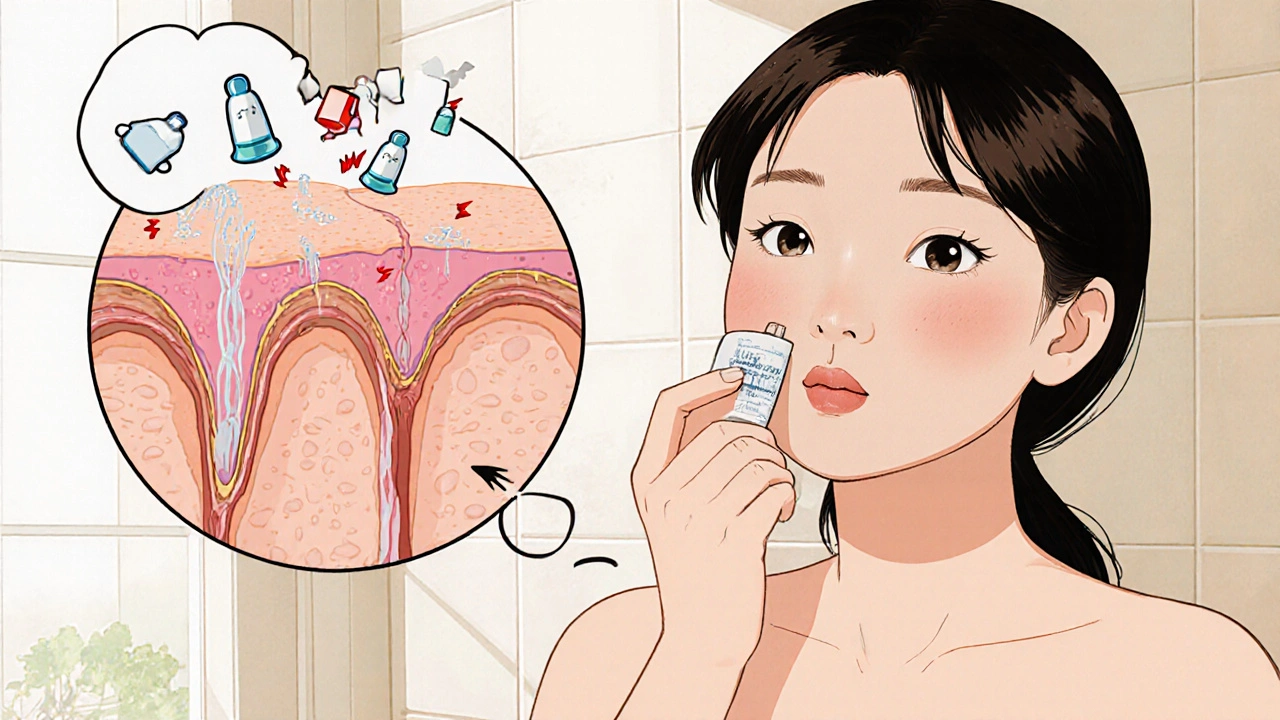Adapalene: What It Is, How It Works, and What You Need to Know
When you’re dealing with stubborn acne, adapalene, a synthetic retinoid used to clear clogged pores and reduce inflammation in acne-prone skin. Also known as Differin, it’s one of the most widely used topical treatments for mild to moderate acne, available both over-the-counter and by prescription. Unlike older retinoids that can irritate skin badly, adapalene was designed to be gentler while still working deep in the pores to stop breakouts before they start.
Adapalene works by normalizing skin cell turnover. Instead of letting dead skin cells stick together and clog pores, it helps them shed properly. This reduces blackheads and whiteheads. It also has anti-inflammatory effects, which means it calms down red, swollen pimples. You won’t see results overnight—most people notice improvement after 4 to 8 weeks. But if you stick with it, many users report clearer skin within 12 weeks. It’s often paired with benzoyl peroxide or antibiotics for tougher cases, but it works well on its own for many people.
It’s not just for teenagers. Adults with hormonal acne, oily skin, or clogged pores also benefit. Unlike some acne treatments that dry out skin, adapalene tends to be less irritating, making it a good choice for sensitive skin types when used correctly. It’s applied once daily, usually at night, and should be used with sunscreen during the day since it can make skin more sensitive to UV light. People often wonder how it compares to tretinoin or isotretinoin—adapalene is milder than those, but it’s also more accessible and easier to tolerate long-term.
What you’ll find in the posts below isn’t just theory. These are real guides from people who’ve used adapalene, or who’ve helped others use it. You’ll see how it fits into daily routines, what side effects to watch for, how to layer it with moisturizers, and why some users see results faster than others. There are also tips on avoiding common mistakes—like using too much, applying it to wet skin, or combining it with harsh scrubs. This isn’t a one-size-fits-all treatment, and the posts reflect that. Whether you’re new to retinoids or switching from another acne product, you’ll find practical, no-fluff advice here.

